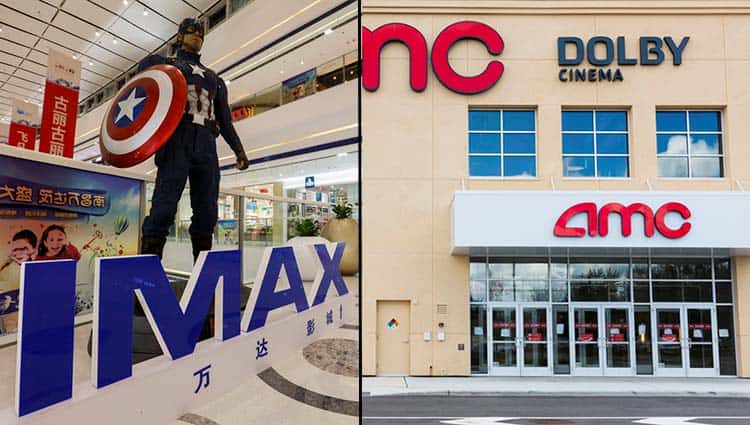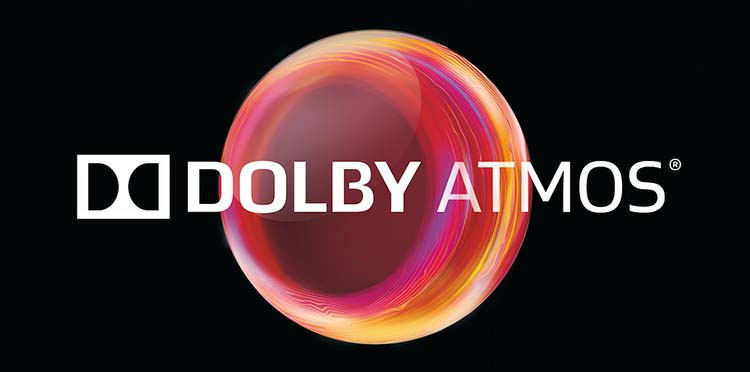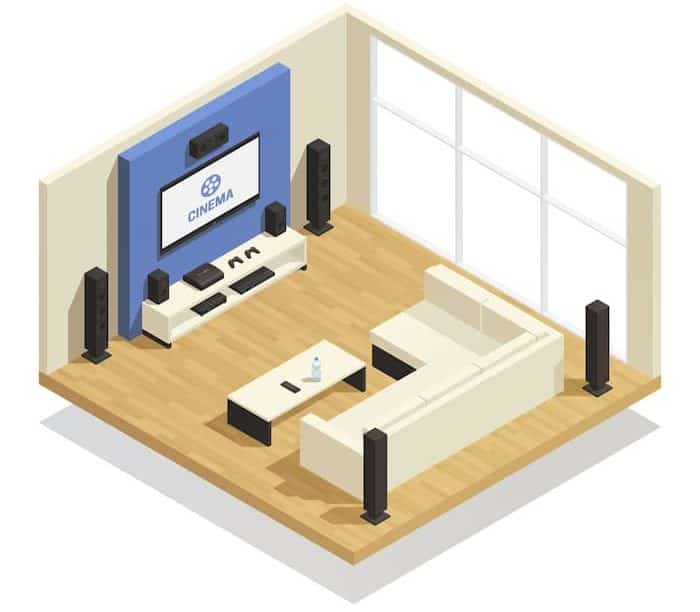Dolby Cinema vs. IMAX: Which Reigns Supreme for Moviegoers?

If you’ve ever wondered whether Dolby Cinema or IMAX provides a superior cinematic experience, you’re in the right place.
In today’s blog post, we dive deep into the world of these two popular movie theater formats to help you decide which one is best suited for your movie-watching preferences.
From image and audio quality to theater comfort and seating, we’ll cover it all. So grab your popcorn and let’s embark on this cinematic journey!
Dolby Cinema vs IMAX – Quick Comparison
Here is a comparison table between the two. We will explore each criterion later in the article.
| Criteria | Dolby Cinema | IMAX |
|---|---|---|
| Image Quality | High resolution, vivid colors, deep blacks | Large screens, immersive experience |
| Audio Experience | Expansive, multidimensional soundscape | Powerful audio, emphasis on bass |
| Comfort | Spacious reclining seats, immersive audio | Standard seats, optimized view |
| Film Selection | Stunning 2D experience | Superior for 3D content, IMAX-shot films |
| Availability | Limited presence (197 theaters worldwide) | Wide availability (over 1500 theaters) |
| Ticket Pricing | Generally more expensive, luxurious experience | Less expensive, more economical |
| Preference | Image quality, immersive audio | Large-format screens, powerful audio |
Also read: Do You Need a Dolby Atmos TV To Get Dolby Atmos?
Understanding the Technologies
Dolby Cinema and IMAX are two dominant formats that have captivated moviegoers for years, promising enhanced visuals and audio experiences in theaters worldwide.
Both Dolby Cinema and IMAX utilize cutting-edge technologies to deliver a thrilling and immersive cinematic experience. Dolby Cinema technology employs Dolby Vision and Dolby Atmos, while IMAX relies on its large-format screens and powerful sound systems.
These innovative technologies set the stage for a cinematic showdown, with Dolby Cinema offering superior image quality and audio technology, while IMAX stands out for its immersive audiovisual capabilities.
Let’s take a closer look at the specific technologies behind each format to better understand their offerings.
IMAX Screen and Sound System

IMAX, known for its towering screens and powerful sound systems, offers an unforgettable cinematic experience.
The average IMAX screen stands at a staggering 75 feet tall, dwarfing traditional movie screens and providing a more immersive viewing experience. IMAX’s screen and sound system work in tandem to create a captivating experience.
The IMAX projection system utilizes dual laser projectors with 2K resolution, with newer theaters employing dual 4K laser projectors to deliver crisp, high-quality images. The audio system in IMAX theaters features a network of 44 JBL speakers, ensuring powerful and clear sound throughout the theater.
With its IMAX screens, sophisticated sound system, and unique aspect ratio of 1.90:1, IMAX offers an unrivaled movie-watching experience that truly transports viewers into the world of the film. Experience the magic of IMAX films and IMAX movies with their immersive visuals and sound quality.
Dolby Vision and Dolby Atmos
Dolby Vision is the projection system utilized by Dolby Cinema, boasting dual 4K laser projectors that deliver images at an impressive 4K resolution and a contrast ratio 500 times greater than that of a standard theater projector.
This cutting-edge technology ensures vibrant colors, deep blacks, and incredible detail in every frame of Dolby Cinema movies.
Dolby Atmos, on the other hand, is an immersive surround sound format that takes audio to the next level.
With up to 128 audio tracks and a speaker configuration that includes 5 in-screen speakers, 48 surround speakers, and 4 subwoofers, Dolby Atmos offers an unmatched auditory experience that will make you feel like you’re a part of the action.
The combination of Dolby Vision and Dolby Atmos in Dolby Cinema theaters, with their state-of-the-art Dolby Cinema screens, provides a truly immersive experience at Dolby Cinemas, boasting stunning visuals and an unmatched sound quality that accurately reproduces the filmmaker’s vision.
Comparing Image Quality: Dolby Cinema vs IMAX

When it comes to image format, both have their strengths and weaknesses. Dolby Cinema’s dual 4K laser projectors provide a higher resolution and contrast ratio, resulting in vivid colors and deeper blacks.
However, IMAX’s massive screens offer a more immersive experience, drawing viewers into the movie with their towering size and unique aspect ratio.
Despite the differences in screen size and resolution, both are capable of delivering breathtaking visuals that surpass traditional movie theaters.
The Dolby Cinema screen is smaller but its Dolby Vision technology ensures every frame is packed with detail and vibrant colors, while IMAX’s large-format screens and high-resolution projectors create a truly enveloping experience.
Ultimately, the choice between Dolby Cinema and IMAX may come down to personal preference and the specific film being viewed.
For example, if a movie was filmed using IMAX cameras, the IMAX format may provide a more authentic representation of the filmmaker’s vision. However, for most films, both offer a stunning visual experience that greatly surpasses standard movie theaters.
Comparing Audio Experience: Dolby Atmos vs IMAX Sound

In terms of audio, both the Dolby Atmos sound system and IMAX sound systems have their own unique advantages. Dolby Atmos delivers a more expansive and multidimensional soundscape, creating an immersive environment that surrounds the audience with rich, detailed sound.
The Dolby Atmos system is also highly adaptable, as it can render audio objects in real-time based on the specific loudspeaker location in each theater, providing a tailor-made audio experience for every venue.
On the other hand, IMAX sound systems produce powerful audio with an emphasis on bass, delivering an impactful and visceral experience that complements the large-format visuals.
While it may not offer the same degree of immersion as Dolby Atmos, the IMAX sound system still provides a high-quality audio experience that enhances the overall movie-watching experience.
Ultimately, the choice between Dolby Atmos and IMAX sound systems may come down to personal preference and the type of film being viewed.
Some viewers may prefer the enveloping and multidimensional audio provided by Dolby Atmos, while others may favor the raw power and intensity of IMAX’s sound system.
Regardless of the choice, both Dolby Atmos and IMAX offer a premium audio experience that will leave viewers captivated.
Theater Comfort and Seating: Dolby Cinema vs IMAX

Comfort and seating are important factors to consider when choosing between Dolby Cinema and IMAX.
Dolby Cinema theaters typically feature spacious reclining seats with transducers installed to provide an immersive experience by directing sound directly to the viewer’s ears. This added level of comfort and immersion can make a significant difference in the overall movie-watching experience.
IMAX theaters, on the other hand, usually offer standard imax seats with less adjustability, providing a comfortable but less luxurious experience compared to Dolby Cinema.
However, the seating arrangement in IMAX theaters is specifically designed to optimize the viewing experience based on the resolution of the screen and the immersive nature of the IMAX format.
When deciding between Dolby Cinema and IMAX, it’s essential to weigh the importance of comfort and seating options in the overall movie-watching experience.
For those who prioritize comfort and a more immersive audio experience, Dolby Cinema may be the better choice. However, if the focus is on the visual experience and immersion provided by IMAX’s large-format screens, IMAX may be the preferred option.
Film Selection and Formats: Dolby Cinema vs IMAX

Both theaters offer a wide selection of films, with some key differences in the formats available. While Dolby Cinema provides a stunning 2D experience, IMAX has an advantage in terms of 3D content and movies filmed with IMAX cameras.
It’s important to note that not all films are available in both formats, and the availability of certain titles may vary depending on the theater and region.
Therefore, when deciding between Dolby Cinema and IMAX, it’s crucial to consider the specific film being viewed and the format in which it was filmed.
Ultimately, the choice between Dolby Cinema and IMAX may come down to the specific film being viewed and the format in which it was filmed. For example, if a movie was filmed using IMAX cameras, the IMAX format may provide a more authentic representation of the filmmaker’s vision.
However, for most films, both offer a premium viewing experience that greatly surpasses standard movie theaters.
Availability and Accessibility: Dolby Cinema vs IMAX
When it comes to availability and accessibility, IMAX has a clear advantage over Dolby Cinema. With a presence in over 80 countries and more than 1500 theaters globally, IMAX is more widely available than Dolby Cinema, which has only 197 theaters worldwide.
This disparity in availability means that moviegoers may have an easier time finding an IMAX theater nearby, compared to a Dolby Cinema location.
However, it’s essential to consider that both movie formats, Dolby Cinema and IMAX, provide a premium viewing experience, and the choice between them may ultimately come down to personal preference and the specific film being viewed.
In summary, IMAX has a wider reach and is more accessible to moviegoers worldwide, whereas Dolby Cinema is available in a limited number of locations.
Despite this difference in availability, both offer a premium cinematic experience that greatly surpasses traditional movie theaters.
Ticket Pricing: Dolby Cinema vs IMAX

When comparing ticket prices for Dolby Cinema and IMAX, it’s important to note that both formats generally command a premium price compared to standard movie theaters.
However, Dolby Cinema tickets tend to be more expensive than IMAX tickets, with the exact cost varying depending on the venue and film title.
Despite the higher price, Dolby Cinema offers a luxurious viewing experience with comfortable reclining seats and superior audio quality provided by Dolby Atmos.
On the other hand, IMAX delivers a more immersive visual experience with its large-format screens and powerful sound system.
In the end, the decision between Dolby Cinema and IMAX may come down to personal preference and the specific film being viewed.
While tickets to a Dolby Cinema theater may be more expensive, the enhanced comfort and audio experience may justify the additional cost for some moviegoers. Conversely, those who prioritize the visual experience provided by IMAX may find the more economical ticket price to be a better value.
Personal Preferences and Recommendations
When choosing between Dolby Cinema and IMAX, it’s essential to consider your personal preferences and the specific film being viewed.
If image quality and an immersive audio experience are your top priorities, Dolby Cinema may be the better choice, thanks to its Dolby Vision and Dolby Atmos technologies.
Alternatively, if you’re a fan of large-format screens and powerful audio, IMAX may be the preferred option, offering an unparalleled visual experience and robust sound system.
Additionally, IMAX’s broader availability and more economical ticket pricing may make it a more accessible choice for moviegoers worldwide.
In conclusion, both offer premium cinematic experiences that cater to different preferences and priorities.
By considering factors such as image format, audio experience, comfort, film selection, availability, and ticket pricing, you can make an informed decision and enjoy an unforgettable movie-watching experience.
Summary
In this blog post, we’ve explored the differences between Dolby Cinema and IMAX, two popular movie theater formats that offer unique and immersive cinematic experiences.
We’ve examined the technologies behind each format, including Dolby Vision, Dolby Atmos, and IMAX’s screen and sound system, as well as compared image quality, audio experience, comfort, film selection, availability, and ticket pricing.
Ultimately, the choice between Dolby Cinema and IMAX comes down to personal preference and the specific film being viewed.
Both formats offer premium viewing experiences that surpass traditional movie theaters, and each has its own unique advantages and disadvantages.
By considering the factors discussed in this blog post, moviegoers can make an informed decision and enjoy a truly unforgettable cinematic experience.
So, the next time you’re planning a movie night, weigh your options and choose the format that best suits your preferences.
Whether it’s the stunning visuals and immersive audio of Dolby Cinema or the towering screens and powerful sound of IMAX, you’re in for a treat!
Frequently Asked Questions
Is Dolby Cinema better than IMAX?
Both technologies offer great visuals and sound quality, but Dolby Cinema is superior when it comes to audio technology. Moreover, Dolby Cinema is less accessible than IMAX and tickets for Dolby Cinema are more expensive.
In conclusion, while both offer great value, IMAX is better in terms of accessibility and price.
Is IMAX enhanced better than Dolby?
Overall, IMAX has the advantage due to its wider 1.90:1 aspect ratio compared to other systems like AMC Prime, digital, ETX and Dolby Cinema that use 2.40:1. This gives you 26% more screen space with IMAX, making it a better choice than Dolby.
Which is more expensive Dolby or IMAX?
IMAX tickets are on average $5 more than regular movie tickets, while Dolby Cinema tickets usually range between $20-$25, making Dolby the more expensive option.
Is 4K Dolby better than IMAX?
Based on projection system comparisons, Dolby Cinema is the clear winner between Dolby Vision’s 4K laser projectors and IMAX’s 4K laser projectors.
What are the main differences between Dolby Cinema and IMAX?
Dolby Cinema provides superior image quality and audio technology, while IMAX offers a more immersive experience with large-format screens and powerful sound systems.




